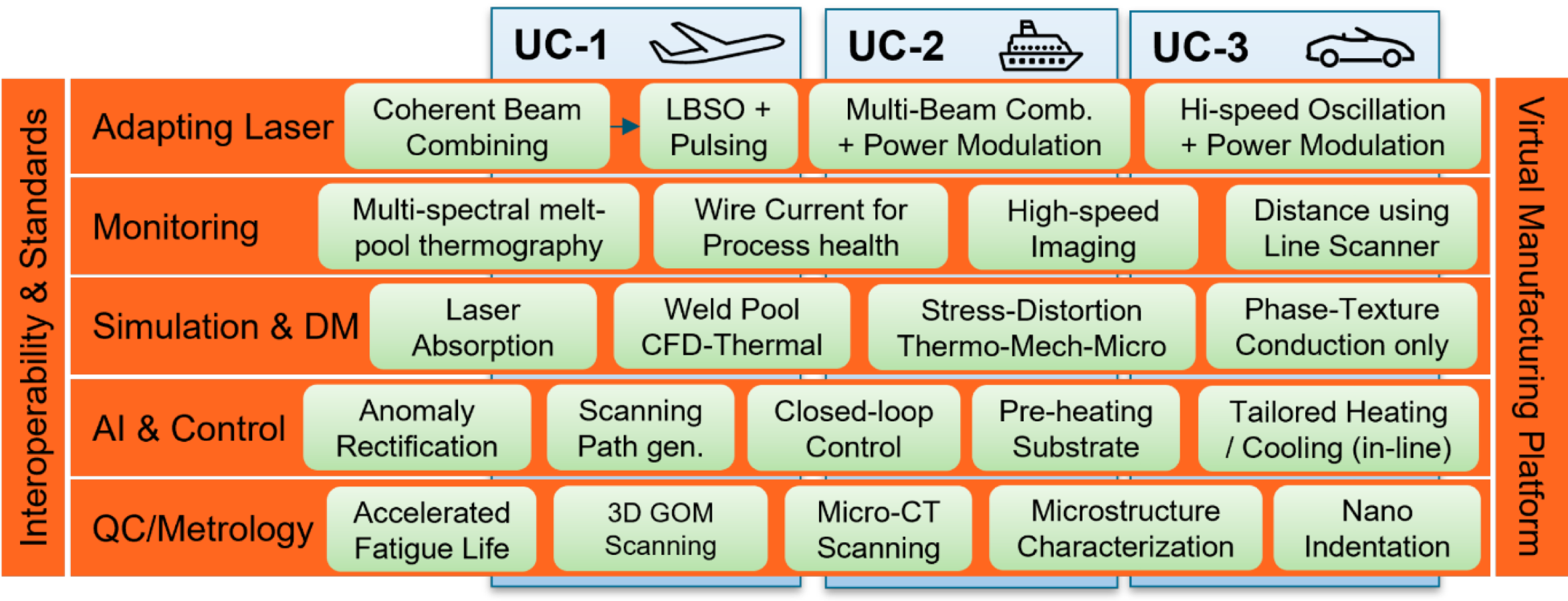ALABAMA – Adaptive Laser Beam for Additive Manufacturing

The ALABAMA project aims to develop and mature adaptive laser technologies for AM. The objective is to decrease the porosity and tailor the deposited material's microstructure by shaping the laser beam, both temporally and spatially, during the AM process. The key innovations in the project are the development of multiscale physics-based models to optimize the AM process. These process parameters will be tested and matured for multi-beam control, laser beam shaping optics, and high-speed scanning. To ensure the quality of the process, advanced online process monitoring and closed loop control will be performed using multi-spectral imaging and thermography to control the melt pool behavior coupled with wire-current and high-speed imaging to control the process. Advanced characterization will be conducted on coupons and use cases to verify that the built material fulfills the requirements.
The matured technology will be tested on three use cases: aviation, maritime, and automotive. These three industrial sectors span a broad part of the manufacturing volumes: from low numbers with high added value to high numbers with relatively low cost. However, all these sectors struggle with distortions, stresses, and material quality. The ALABAMA use-case demonstrators will improve the compensation for distortions during the AM process, reduce the build failures due to residual stresses, reduce porosity, and improve the tailoring of the microstructure. Overall, this will contribute to up to a 100% increase in process productivity, 50% fewer defects, 33% cost reduction due to increased productivity and energy savings, a reduction of 15% in greenhouse gases, and enable first-timeright manufacturing thanks to simulation, process monitoring, and adaptive control. The end users will insert the technologies while the sub-technologies developed in the work packages will be commercialized. This will increase the autonomy of a resilient European industry.
Fraunhofer SCAI contributes to the ALABAMA project by coordinating standardization activities for data formats, interfaces, and semantic information concepts. The VMAP standard will play an essential constructive role in exchanging and storing data from simulation, testing, and, in some cases, process monitoring. Fraunhofer SCAI can access the top-level ontology MpCCI Manufacturing Ontology to create the semantic information concepts.
Project Partners
- SINTEF Manufacturing AS (Norway) Coordinator
- Manufacturing Technology Norwegian Catapult AS (Norway)
- Fraunhofer Institutes IKTS, SCAI (Germany)
- Fundacio EURECAT (Spain)
- Lulea Tekniska Universitet (Sweden)
- Aerobase Innovations AB (Sweden)
- IRIS SRL (Italy)
- Flowphys AS (Norway)
- Centro Ricerche FIAT SCPA (Italy)
- Nordic Additive Manufacturing as (Norway)
- GKN Aerospace Sweden AB (Sweden)
- Technovative Solutions LTD (United Kingdom)
Funded by the European Commission / Grant Agreement No: 101138842
Project duration: 01/2024 until 12/2027

